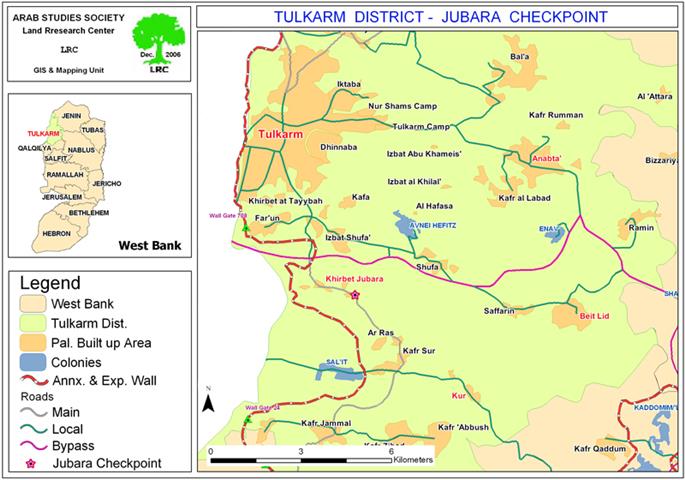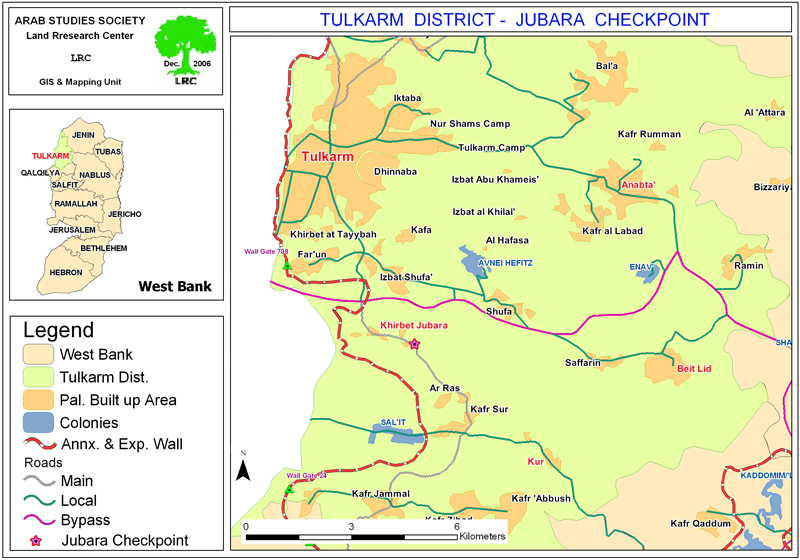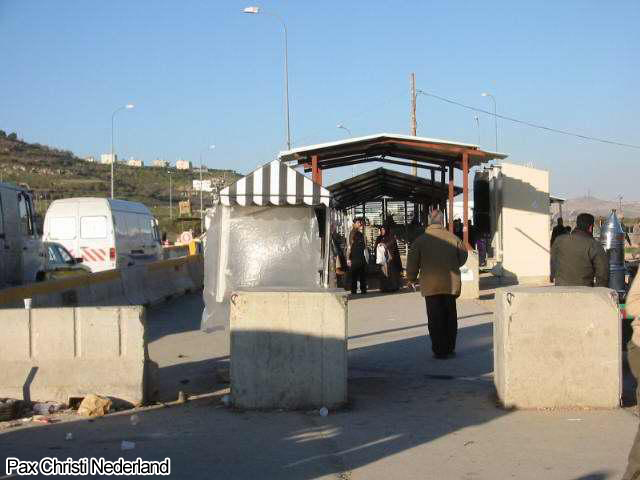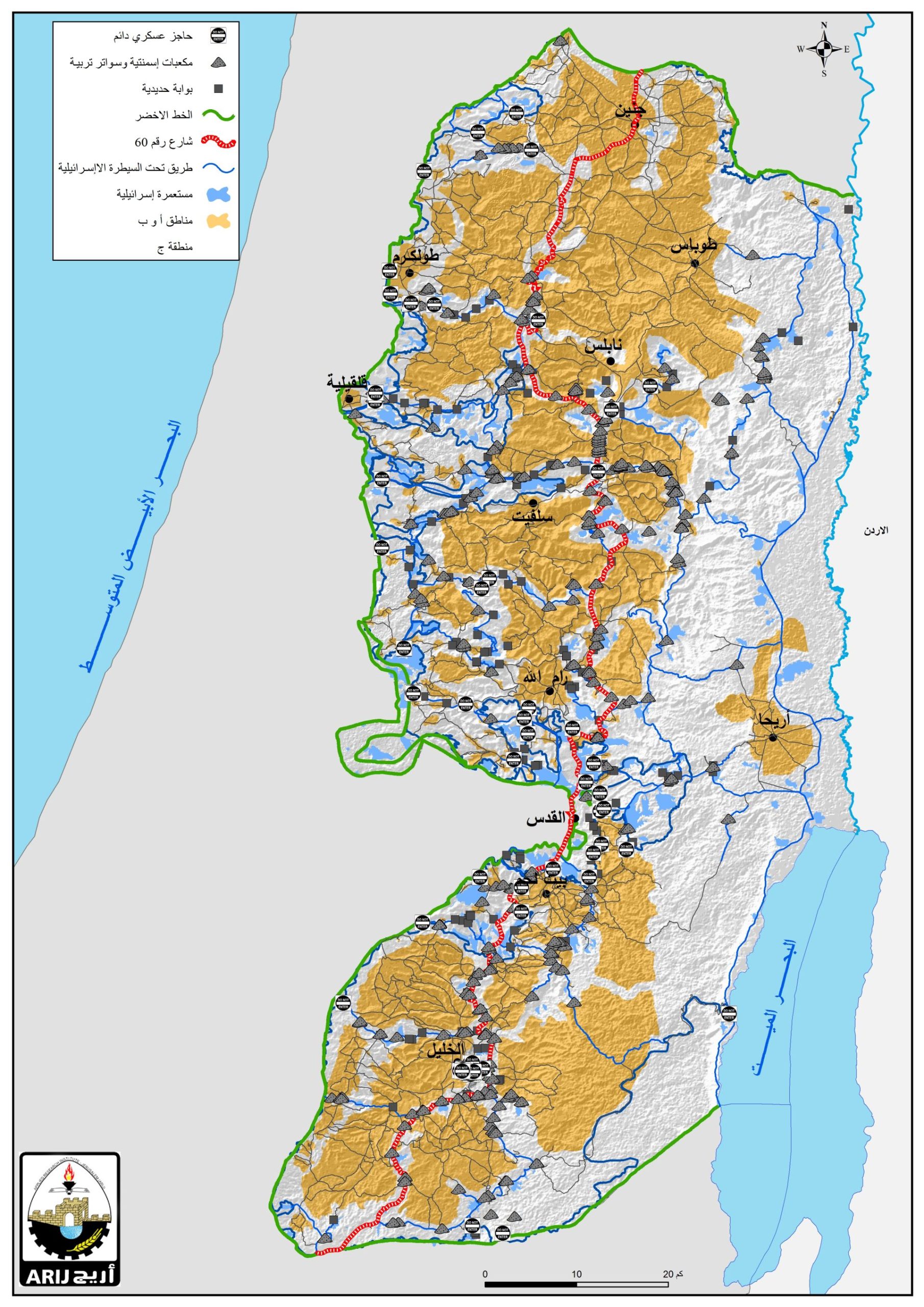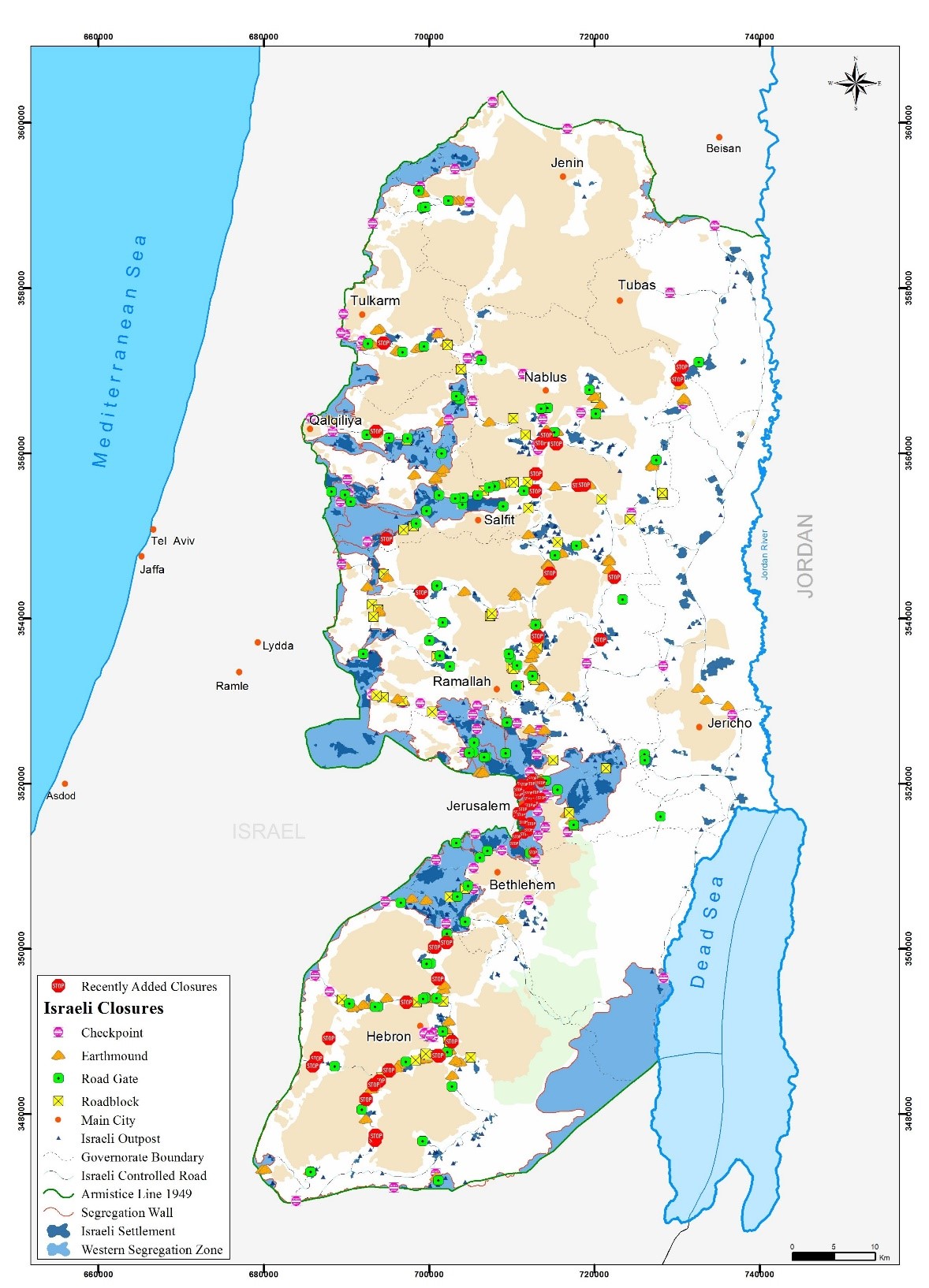Recently, the Israeli occupation forces began to impose further complications on the Palestinian movement in and out of the city of Tulkarem through the Jubara checkpoint which is supposed to link between Tulkarem and Qalqiliya governorates, on one hand, and between the city of Tulkarem and its southern villages, on the other hand.
At the same time, similar complications were also imposed at Hawara checkpoint in the south of Nablus. This checkpoint is located between Nablus and the southern governorate of Ramallah and Al Bira.
The two checkpoints were established as part of the Israeli separation and cantonization plan in the West Bank which aimed at dividing the Palestinian areas into separate closed cantons and controlling the Palestinian movement amongst these canton.
Complications at Jubara checkpoint, Tulkarem:
The Land research Center's field worker depicted the following additional complications and restrictions:
-
Intermittent and unexpected closure of the checkpoint interrupting the daily crossing of people, of whom many are students, employees and farmers under alleged security claims. See Map 1
-
Delaying and hindering the people movement through Jubara checkpoint where sometimes those carrying the Tulkarem IDs are not allowed to pass through and they have to take more costly and length roads through Anabta town in the east, then Beit Lid in the south east, and finally through Kur village in the south before reaching the Kafriyat area. In the past the road between the Kafriyat area and the city of Tulkarem used to take not more than 15 minutes drive ( 10 km long). Now, it needs at least one hour as passengers are obliged to travel more than 35 km through the aforementioned alternative road route.
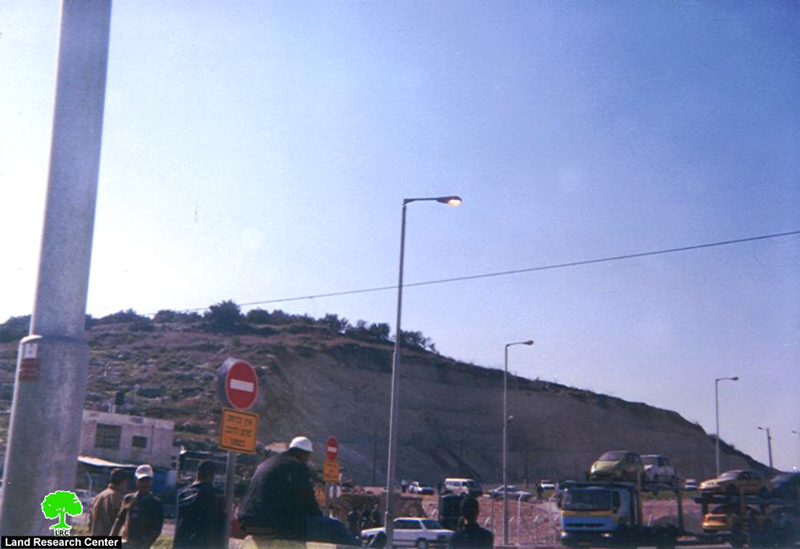
(Photo 1: people and vehicles waiting at Jubara checkpoint)
-
Although the Jubara checkpoint is an internal one separating between Palestinian governorates and has nothing to do with crossing to Israel strict and humiliating checking measures have been imposed on it, including body searching, unloading of cargos and detaining of people for long hours.
-
Introducing more watch towers and army personnel as well as additional fences and fortifications in and around the checkpoint.

(Photo 2: a military tower overlooking the Jubara checkpoint)
Complications at Hawara checkpoint, Nablus:
The Land research Center's field worker depicted the following additional complications and restrictions:
1. Detaining and delaying people for long hours by forcing them to stay in long queues, pass through rolling gates, uplift their clothes and carry meticulous body searches on them.
2. Creating big congestions by allocating only two tiny walking paths for all passengers willing to cross from Nablus governorate to Ramallah and south.
3. Occasional opening of fire, and throwing of tear gas and sound bombs at the waiting crowds causing, sometimes, injuries and deaths like the killing of a youth from the village of Burin at the end of last November.
4. Forcing all car drivers ( public, private and international humanitarian ) to obtain valid passing permits from the Israeli military as a requisite for passing this checkpoint. However, not all applicants succeed to get such a permit.
5. Fixing more watch towers at the hills overlooking the checkpoint which resulted in the confiscation of more plots of land and deprivation of farmers and land owners from approaching these towers to tend their land. In other words, the Israeli army, by so doing, created small military zones inaccessible for Palestinians. See Map 2
6. Establishing a new room for women's checking provided with all the technological facilities usually seen in international border crossings despite the fact that this checkpoint is inside the occupied Palestinian territories and separates between Palestinian districts.
(Photo 3: Hawara checkpoint, Nablus
Prepared by
The Land Research Center
LRC


